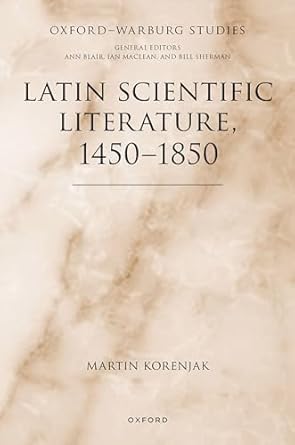
Author: Martin Korenjak (University of Innsbruck)
Publisher: Oxford University Press, 2023
This book provides the first overview of the vast natural scientific literature written and published in Latin in the early modern era. During this period, the emergence of what ultimately became modern science took place mainly in Latin, the international language of educated discourse. Hundreds of thousands of scientific texts were published in Latin from the invention of print to the demise of Latin as a language of science (c.1450–1850). Despite its importance, our knowledge of this literature is very limited at present. The book, which aims to rectify this situation, approaches the field, not from the perspective of a natural scientist or a historian of science, but from that of a literary scholar. Instead of the scientific content or methodology of the works under consideration, it is the genres of scientific literature and their communicative functions which are the focus of attention.
The book falls into two main parts: Part I (‘Contexts’) introduces four aspects of early modern intellectual culture which are crucial for an understanding of the scientific literature of the time in as many chapters: the development of science, the role of Latin, the notion of literature, and the rise of print. Part II (‘Texts’) offers a detailed review of Neo-Latin scientific literature. In five chapters defined by the communicative functions of the texts under discussion—making sources accessible, presenting facts, arguing for certain positions, summarizing knowledge, and publicizing science—twenty pertinent genres are presented and analysed.
Contents
Dedication
Preface
List of figures
Introduction
Part I Contexts
1 Science
2 Latin
3 Literature
4 Print
Part II Texts
5 Making sources accessible
6 Presenting facts
7 Arguing
8 Summarizing knowledge
9 Publicizing science
Conclusion
Bibliography
Index